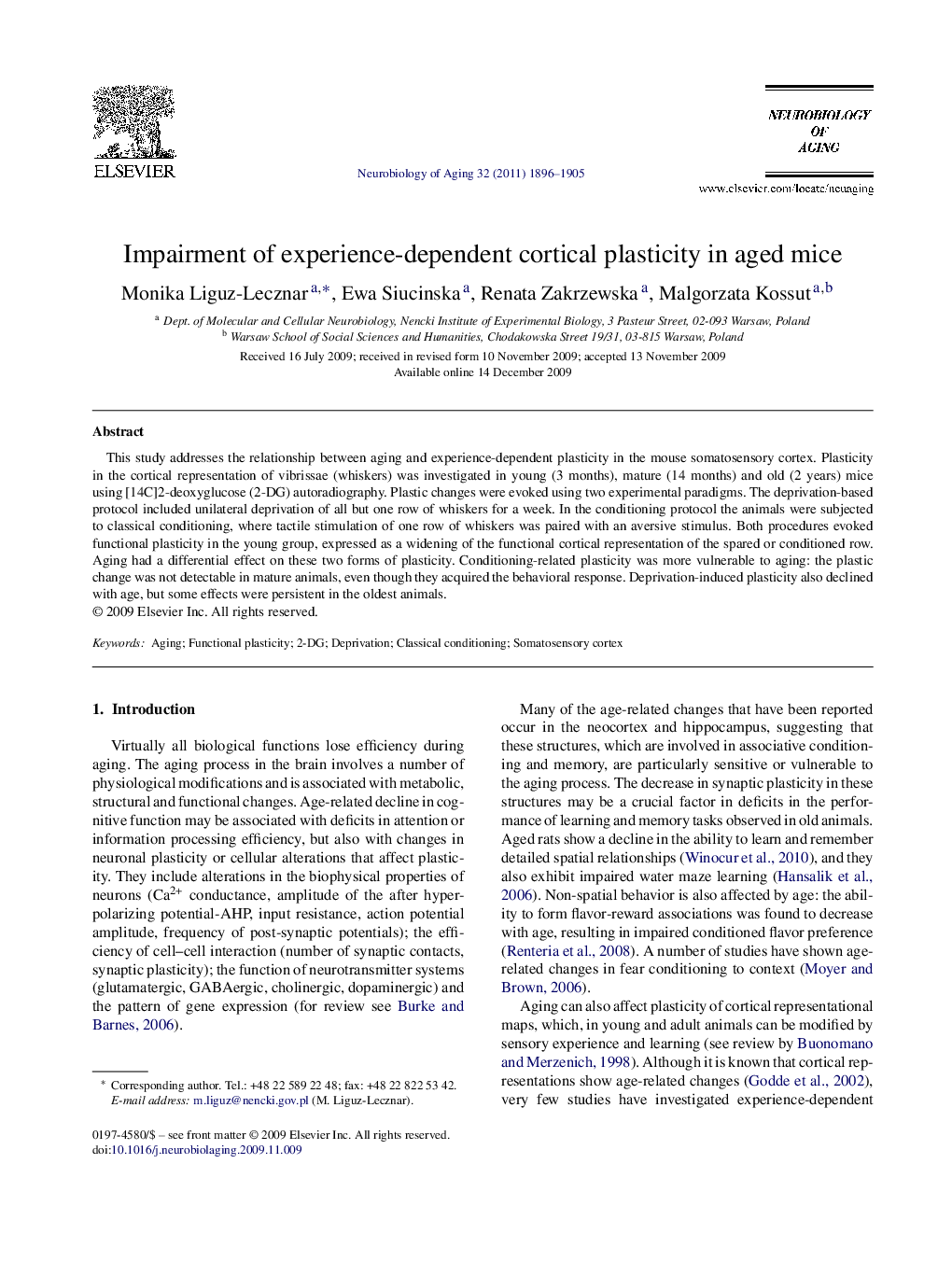| Article ID | Journal | Published Year | Pages | File Type |
|---|---|---|---|---|
| 6810289 | Neurobiology of Aging | 2011 | 10 Pages |
Abstract
This study addresses the relationship between aging and experience-dependent plasticity in the mouse somatosensory cortex. Plasticity in the cortical representation of vibrissae (whiskers) was investigated in young (3 months), mature (14 months) and old (2 years) mice using [14C]2-deoxyglucose (2-DG) autoradiography. Plastic changes were evoked using two experimental paradigms. The deprivation-based protocol included unilateral deprivation of all but one row of whiskers for a week. In the conditioning protocol the animals were subjected to classical conditioning, where tactile stimulation of one row of whiskers was paired with an aversive stimulus. Both procedures evoked functional plasticity in the young group, expressed as a widening of the functional cortical representation of the spared or conditioned row. Aging had a differential effect on these two forms of plasticity. Conditioning-related plasticity was more vulnerable to aging: the plastic change was not detectable in mature animals, even though they acquired the behavioral response. Deprivation-induced plasticity also declined with age, but some effects were persistent in the oldest animals.
Related Topics
Life Sciences
Biochemistry, Genetics and Molecular Biology
Ageing
Authors
Monika Liguz-Lecznar, Ewa Siucinska, Renata Zakrzewska, Malgorzata Kossut,
